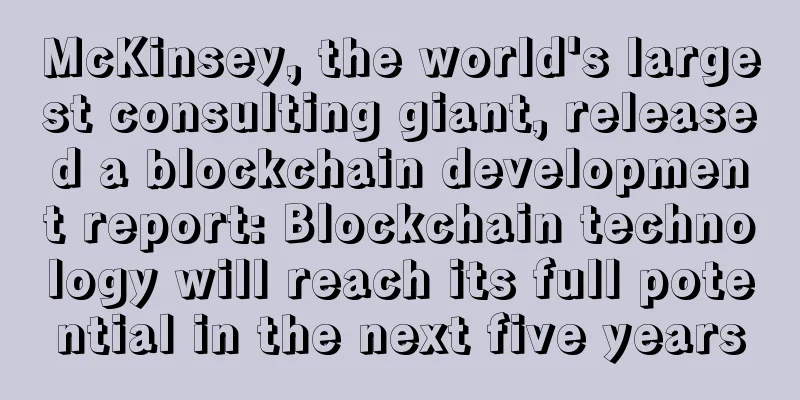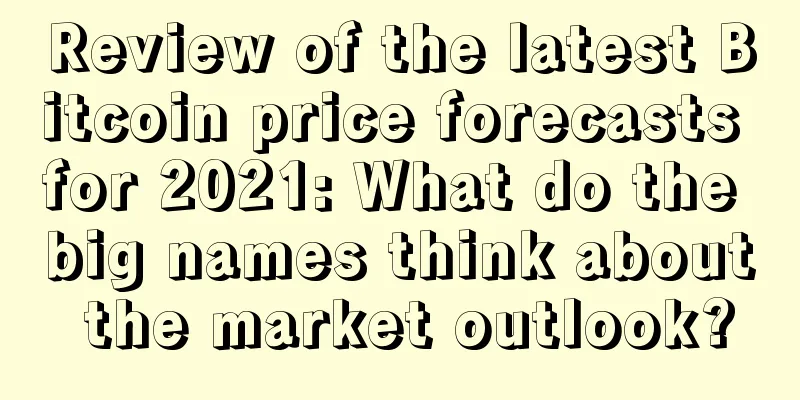McKinsey, the world's largest consulting giant, released a blockchain development report: Blockchain technology will reach its full potential in the next five years

|
McKinsey The report calls the period from 2009 to 2016 the "Dark Ages," during which all solutions were based on Bitcoin. The company believes that the new era of blockchain will begin in 2016. More mature enterprises using this technology have now entered the market, and more than 100 blockchain technology solutions have been explored. The company expects 20 to 30 blockchain technology proof-of-concept use cases to be tested in 2018, and 10 to 20 successful enterprise cases will survive and be commercially deployed in 2020.
McKinsey surveyed 200 companies and found 64 different use cases. The report claims that the insurance industry is the largest non-Bitcoin blockchain solution - 22%. Next is the payment industry - 13%. Financial services overall accounted for 50% of the use cases. In terms of dollar value, the largest revenue-generating area is cross-border business-to-business payments, with revenue of $50-60 billion, followed by trade finance, with $14-17 billion. Of the 64 different use cases, 24 are in financial services applications. However, seven of them are described in the report as "real use cases" that solve some "pain points" in the current system, and they are pointed out that these cases will bring the most revenue and are the most worth pursuing. Among these seven use cases, McKinsey expects blockchain to generate "between $80 billion and $110 billion in benefits."
It is worth noting that venture capital investment in blockchain startups in 2016 has exceeded 2015 and set a new record. The report pointed out that the banking industry is injecting funds into blockchain technology more quickly and steadily, and it is expected to reach US$400 million in 2019. The report estimates that blockchain will be adopted in about half the time of other reports. The World Economic Forum (WEF) released a report on the tipping point of disruptive technologies in October 2015, which included predictions for blockchain technology. The report claimed that governments will reach the tipping point for blockchain technology use by 2023, while the private sector will reach the tipping point for "bitcoin and blockchain" use by 2027. Regarding capital markets for stocks and securities trading, Euroclear and consultancy Oliver Wyman predict that “blockchain technology may still take more than 10 years to disrupt the core of this system.” However, in the next one to two years, startups and standards in this field will emerge, as well as “niche applications that will define new markets.” In another three to five years, most large players will use blockchain technology. Global business consulting firm Accenture predicts a similar timeline for blockchain development, but two years shorter. Top investment bank Morgan Stanley has also published some of their views on the use of blockchain technology and given a time frame, but they also pointed out 10 barriers that are currently preventing financial technology from adopting the technology. In May last year, the company said:
More recently, IBM released two reports based on two surveys in September last year, one of which surveyed 200 global banks and the other surveyed 200 global financial market institutions. Both reports focused on blockchain adoption and adoption rates. The reports stated:
|
<<: Bitmain starts selling Antminer R4
Recommend
Will a woman with a mole under her eye bags bring bad luck to her husband?
The area where your eye bags are located is actua...
The Destiny Line in Palmistry
The fate line is the part that shows the rise and...
Fed pauses rate hikes: market sentiment and future outlook
Although many friends think that the current macr...
Is it good for people to have upturned eyes? What does a woman with upturned eyes look like?
The tails of different people's eyes are diff...
Teach you how to read the wisdom line
In palmistry, the wisdom line is a very complex l...
A good friend you can count on
Physiognomy is a traditional Chinese knowledge th...
What does a mole on a girl's chest mean?
Moles can be found all over the body, and a woman...
Is it good for a girl to have tiger teeth? The fate of men and women with tiger teeth
Canine teeth are the deformed tooth shape. Many p...
How to recognize people: face and eyes teach you how to recognize people
How to recognize people: face and eyes teach you ...
What kind of face makes people beautiful and wealthy?
What kind of face makes people beautiful and weal...
What facial features indicate that your fortune is declining?
It is not impossible for people's abilities t...
The facial features of a woman with a good fortune and wealth
If some women are destined to be rich, then what ...
What will happen to people with Buddha eyes?
Everyone has their own characteristics. In our im...
Breast shape tells a woman's life
Every woman cares about her breasts without excep...
OpenBazaar releases development roadmap, plans to integrate Tor network and develop mobile apps
Bitcoin-powered decentralized marketplace OpenBaz...









